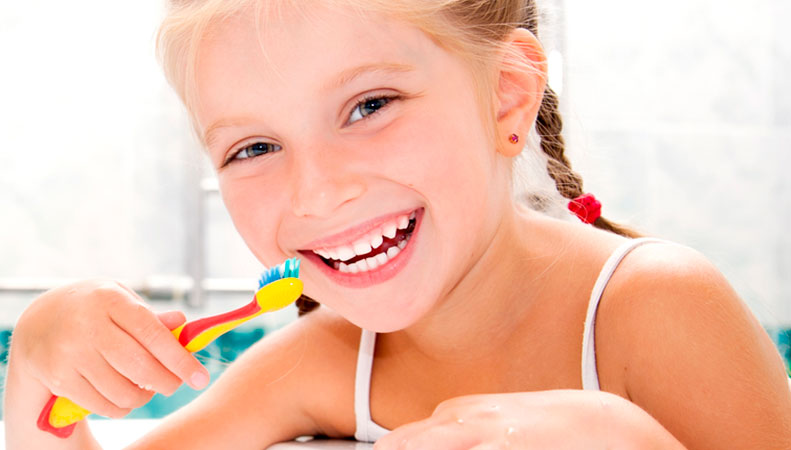Caries is the most important dental disease in children, which is why we must place special emphasis on its prevention and control in children.
EDUCATION TO THE SMALLEST AND TO THE ELDERS…
In Lázaro Clinic we have devices that help us teach the prevention of cavities to the little ones.
We teach and demonstrate the technique of brushing teeth and the importance of diet and topical application of fluorides, so that both children and parents understand the reason for preventive measures and the need for team effort part of the dentist, the child and the parents to apply such measures.
THE DIAGNOSTIC IS MORE DIFFICULT IN CHILDREN THAN IN THE ELDERLY…
The dentist does not have the same communication with the child as with the adult, the verbal answers to the questions about the symptoms can be unreliable either due to lack of confidence in the first visits, shame, fear or simply difficulties in expressing oneself by the child’s early age
Many of the conventional diagnostic techniques used in adults, such as the stimulus to cold and / or heat, are not reliable when applied to children.
For all this in the child the diagnosis is usually more difficult than in the adult and therefore it is essential to practice preventive dentistry to avoid the need to apply restorative dentistry.
AT WHAT AGE SHOULD THE FIRST REVISION BE A CHILD…
The Spanish Society of Pediatric Dentistry recommends that the first visit to the dentist be made in the first year of life.
Pediatric dentists often report that many children aged three and four treated by them should have been treated before.
Many parents of patients who are in this age group report that the extensive cavities that their children present in milk teeth seem to have developed overnight.
The dentist should inform the parents that the small cavities of the temporary (“milk”) teeth can enlarge more quickly than the cavities of the definitive teeth since the enamel of the temporal teeth is only half as thick as the definitive teeth.
If you want to detect the cavities of the temporary teeth before they become large, you have to examine the child’s mouth regularly.
In Lázaro clinic we recommend that the reviews of the smallest ones be made with a biannual frequency and in some cases of high risk of caries on a quarterly basis.
WHAT TREATMENTS TO CARRY OUT IN CHILDREN…
In the practice of children’s dentistry can apply almost all facets of dentistry, however as already mentioned, in clinic Lázaro bet on preventive dentistry to not get to restore teeth at such an early age.
Once the tooth decay is established, a tooth will be made:
- A resin restoration or filling of the temporary tooth.
- When the caries has already affected the nerve, pulpotomy (=Removal of the most superficial area of the nerve that affects the coronal portion of the tooth) or a pulpectomy (=Removal of the coronal nerve and root canals) will be evaluated in case of phlegmon, infection or fistula.
- These treatments are performed in order to preserve their function in the arch and avoid dental problems that could occur if the tooth is removed.
- The very broken teeth, which are so frequently seen in children, are restored with steel crowns that provide the necessary support to save the teeth and to maintain the spaces within the dental arch.
- When temporary or permanent teeth are lost prematurely, a space maintainer is used during temporary dentition and mixed dentition, or a fixed bridge in the permanent dentition, to prevent displacement of the other teeth.


